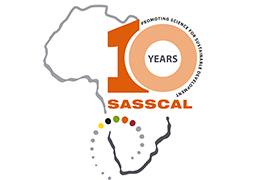Rug pulls, a prevalent issue in the decentralized finance (DeFi) ecosystem, have become synonymous with scams in cryptocurrency investments. In this case, developers hold a large reserve of tokens from the project they’ve created. After artificially inflating the price by promoting the token and encouraging people to buy in, the developers dump their holdings all at once.
A rug pull is a term originating in the cryptocurrency and decentralised finance (DeFi) world. To protect yourself from cryptocurrency scams, such as rug pulls, it’s crucial to remain cautious and be able to identify the warning signs. Understanding what a rug pull is and familiarizing yourself with crypto terms is important for anyone interested in cryptocurrency. This article explains what to watch out for, outlines key warning signs, and provides tips on how to avoid falling victim to these crypto scams.
- This approach limits potential losses if the project turns out to be fraudulent.
- CoinMarketCap issued a warning, noting that the token couldn’t be sold on the decentralized exchange PancakeSwap, leading many to label it a rug pull.
- After collecting substantial funds, the developers abandon the project and disappear with their own gains, leaving users stranded.
- The expanding crypto industry will likely lead to stronger legal systems that can better punish scammers for their criminal activities.
- Touted as a fork for the SudoSwap marketplace and LooksRare, the project offered yield farming to investors looking to stake wETH, XMON, and LOOKs for Sudorare tokens for a week.
Common Types of Rug Pulls
- Remember that most scam projects will try and get people to make swift decisions before they can step back and look at the big picture.
- The DeFi industry is still relatively new and presents varied opportunities to make money.
- You should not construe any such information or other material as legal, tax, investment, financial, cybersecurity, or other advice.
- The investors end up with useless assets but the developers successfully obtain the funds.
- Use trusted platforms and start with a small commitment of funds when exploring new projects.
Uranium Finance was a DeFi project that promised to provide investors with exposure to uranium mining, but it was yet another rug pull. The developers of Uranium Finance drained the project’s liquidity pool and vanished, leaving token holders with heavy losses. A rug pull is a type of crypto scam where developers raise funds from investors and then ditch the project they used to create the buzz. In 2017, BitConnect, a cryptocurrency lending platform, shockingly shut down, leaving investors with worthless tokens and causing millions of dollars in losses. The rapid evolution of cryptocurrency law follows the increasing frequency of rug pulls in the market. Both regulatory bodies and governments are paying attention to this trend, which could lead to major consequences for scammers and the entire industry.
Rug pulls how can we say bitcoin is overvalued when we don’t know how to value it 2020 are one of the darker realities of crypto — but they’re not inevitable. Huge APYs, zero fees, claims of “the next Doge/PumpETH/Bonk” without substance – these are classic bait tactics. It’s like planting a rug for people to stand on and then pulling it from under them unexpectedly – hence the name. Chain Abstraction is an infrastructure and application-layer paradigm in the blockchain space.
Returns on the buying and selling of crypto assets may be subject to tax, including capital gains tax, in your jurisdiction. One happened so fast it was obvious that the founders just took the money and ran, he said. Another was a slow rug pull, which became evident over time as the team breadcrumbed communication until finally it hit a full stop. The next time it wasn’t a rug pull, but rather a startup en route to collapse.
Be Wary of Unrealistic Returns
Ironically, the trader’s holdings would have been worth $4 million had he not sold them prematurely. In November 2024, a 12-year old trader made headlines after attempting a crypto rug pull on a memecoin he created, called Gen Z Quant (QUANT), during a live stream. If the investment opportunity comes with disclosures, be sure to read them. The SEC has fined crypto companies for not providing necessary information to investors and potential investors. The regulator has stated that if crypto companies offer investment contracts (i.e., securities) in exchange for tokens, they must register and comply with SEC regulations.
Hours after selling around $1.1 million of Frosties, Nguyen and Llacuna shut down the project and absconded with investor funds. The SEC uses what’s called the Howey Test as their framework to evaluate whether specific crypto assets qualify as securities. For example, some agencies believe that blockchain projects should be treated as securities, while the tokens themselves shouldn’t. Balance the draw of possible rewards with rigorousanalysis and prudence as you explore the boundaries of cryptocurrency.
Tier 3: Code Auditing
Some scammers will even fake attacks to their protocols and then warn investors of potential scammers and hackers, giving themselves an air of legitimacy. Evaluate the token’s smart contract and transaction history using applications like Etherscan or BscScan. Developers may be able to alter transactions or create an infinite number of tokens through contracts with “mint” or “owner control” features, so keep an eye on these parameters and avoid those tokens. The developers of a legitimate project would want to let their background establish their credibility and inspire confidence in investors who can put a face to the project. However, bad actors may purposefully remain anonymous to ensure they can disappear into thin air once they execute the scam. They can also run another scam since nothing ties them to their previous projects.
Fake Projects
Rug pulls may occur shortly after a project’s launch, or it may play out over a longer period of time, extending the investors’ misery. Despite the suspicious javascript practice exercises for all levels transactions of the money from their presale address, there is no formal confirmation as of press time that Aqua performed a rug pull. Aqua performed a public sale of their token, sharing an address where investors could send up SOL and receive AQUA tokens after launch.
Types of crypto rug pulls
QuillCheck is an AI agent designed to perform thorough token due diligence, helping investors protect their Web3 investments. It can identify honeypots, analyze token permissions, and provide market insights to shield users from rug pulls and scams. Whatever the case, the developers usually promote a crypto scam with enough marketing to hype up investors into buying the token by promising unrealistic APY (Annual Yield Percentage).
In fact, most of them will not, as demonstrated by money pooled in the most popular cryptocurrencies. Bitcoin and Ethereum still dominate the market, with the third introducing broker achieve worth-while partnerships largest coin not even half of Ethereum’s market cap. A scam is a fraudulent or deceptive scheme designed to trick individuals into giving away their money, personal information, and/or other valuable assets.
The expanding crypto industry will likely lead to stronger legal systems that can better punish scammers for their criminal activities. Crypto rug pulls pose a significant risk to investors in the decentralized finance space. By understanding the mechanics of these scams, recognizing red flags, and staying informed about the biggest crypto scams and recovery options, investors can better protect themselves from getting rugged. Thorough due diligence, skepticism, and vigilance are essential for navigating the DeFi landscape safely and profitably. Understanding the rug pull meaning and recognizing warning signs are essential for safe crypto investing. While the crypto market offers incredible opportunities, it’s also a space where scams can thrive.
Thodex, a major cryptocurrency exchange in Turkey, collapsed in April 2021, stranding 400,000 users and resulting in its founder, Faruk Fatih Özer, fleeing with $2.6 billion in crypto assets. In 2016, Ruja Ignatova proclaimed OneCoin as the future’s biggest cryptocurrency. By that time, British investors had already put €30 million into the project. Imagine investing in a shiny new crypto project, only to find out that the developers have vanished with your money.




